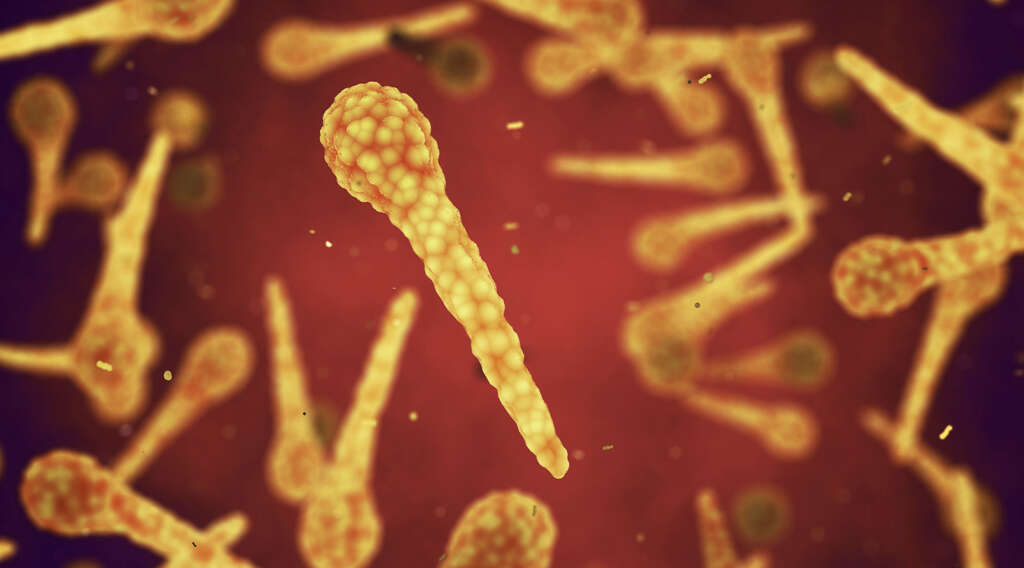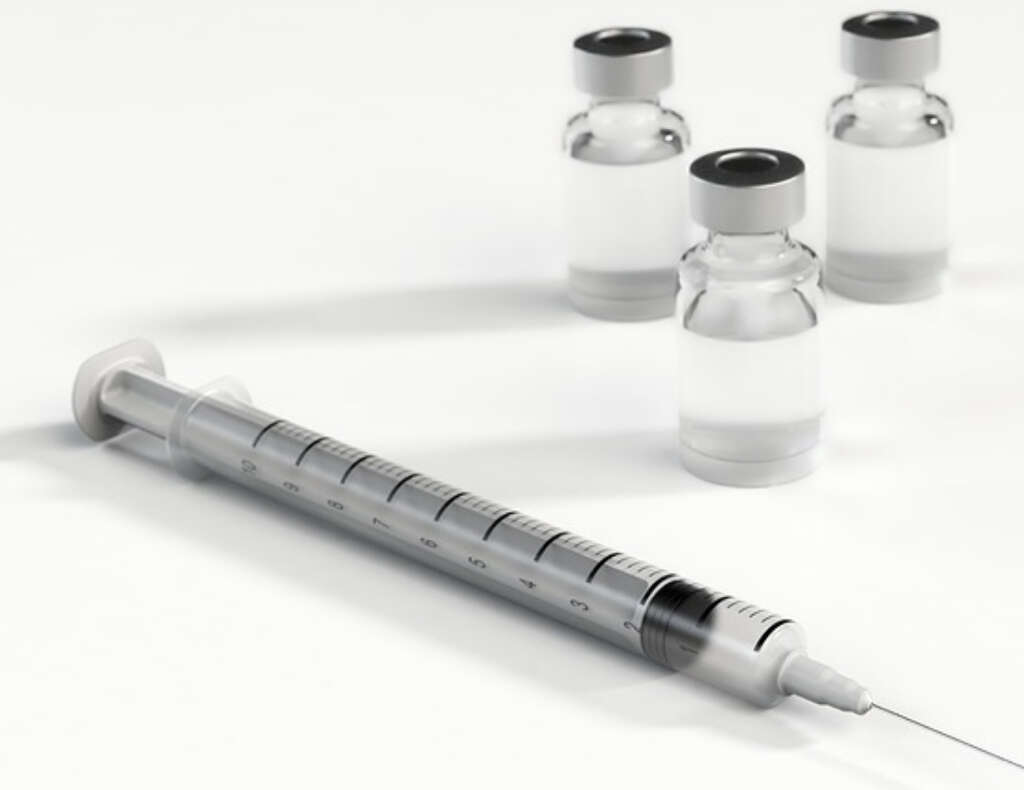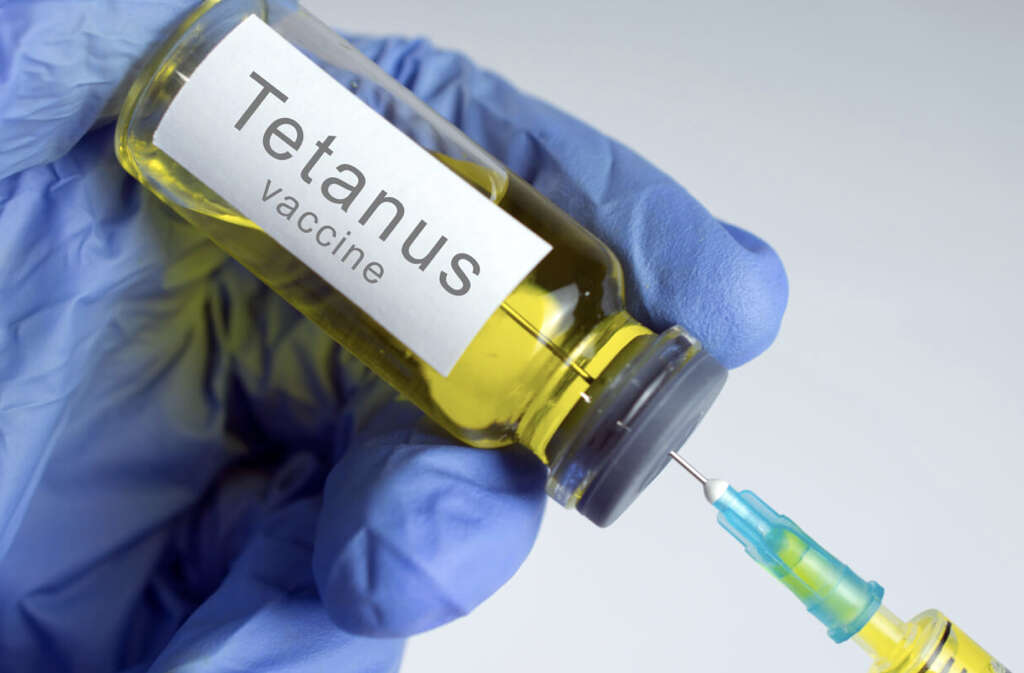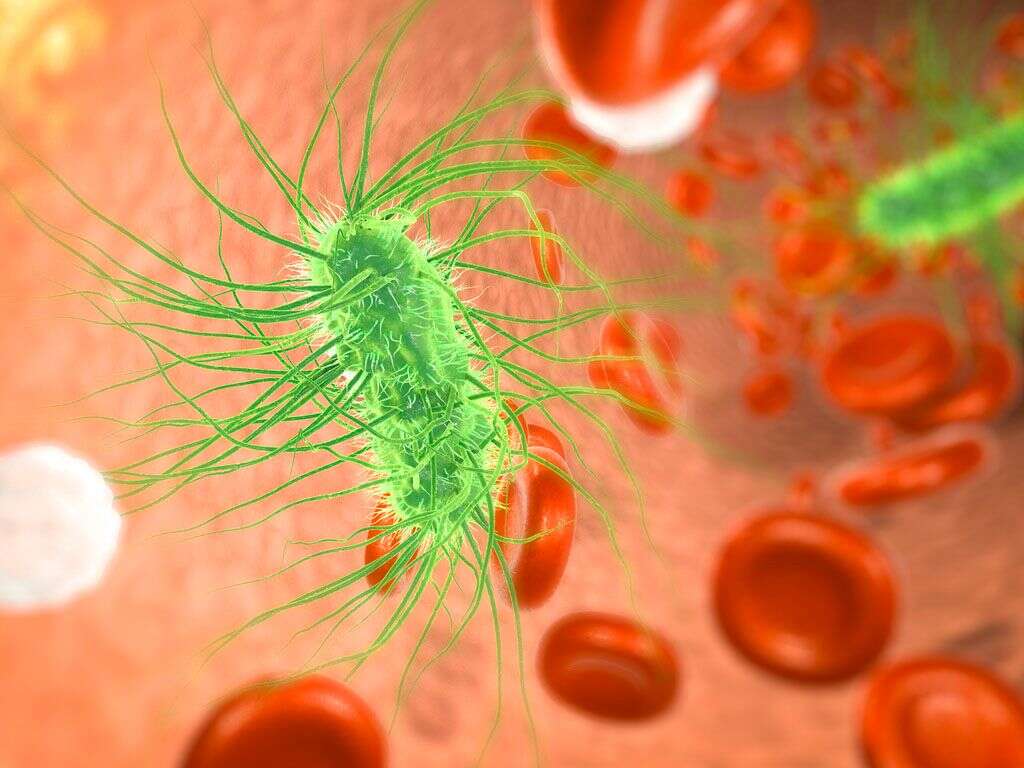What Is Tetanus?
The word “tetanus” comes from the Greek word “tetanos” meaning muscle spasm or tension. You may know tetanus by its more colloquial name, “lockjaw.” Both reflect what the disease does to the body. Its most notable symptoms are stiffness and spasm of the muscles, particularly in the upper body.
Tetanus is a serious and potentially deadly disease caused by a bacterial infection. Chances of dying from tetanus increase with age. Though there is no cure, it can be prevented through vaccination. These lose effectiveness over time, however, so you must receive boosters to maintain immunity.

1. What Causes Tetanus?
Tetanus is caused by an infection of Clostridium tetani bacteria. Spores of the bacteria are found throughout the environment. They are particularly prevalent in the manure of animals and in the soil. Ordinarily, your skin provides protection against the spores, preventing them from entering your body.
However, a wound or opening in the skin can allow the spores to enter the body, where they cause a bacterial infection. Full-grown C. tetani bacteria produce a substance called tetanospasmin. This is a neurotoxin that interferes with the signals traveling to the muscles from the nerves to the brain.

2. How Do People Contract Tetanus?
Any puncture wound can potentially expose the body to C. tetani spores, especially if the object penetrating the skin has been contaminated with soil or feces. Dog bites also pose a potentially greater threat because dogs can carry the C. tetani bacteria without becoming ill themselves. Saliva can contaminate the bite wound.
However, people have contracted tetanus from gunshot wounds or as a post surgical infection. A compound fracture in which the broken bone protrudes through the skin can also put you at risk. Fortunately, tetanus cannot be spread through person-to-person contact.

3. Are Certain People at Greater Risk Than Others?
Anyone who has not received sufficient vaccination is at risk for tetanus. The disease can be more serious in pregnant women who have not been immunized. A pregnant mother can also pass the infection on to her unborn baby. Neonatal tetanus develops within 28 days following birth. It claimed the lives of 34,000 infants worldwide in 2015.
Today, tetanus is more prevalent in developing countries where people do not have access to the vaccine. In countries where vaccination is routine, it is much less common. There are only about 30 reported cases per year in the United States.

4. What Are the Symptoms of Tetanus?
Recognizing tetanus infection early helps to improve the prognosis. The early symptoms of tetanus are similar to symptoms of other bacterial infections and include headache, fever, sore throat, and diarrhea. Other early symptoms of tetanus are rapid heartbeat, acute sensitivity to touch, and bloody stool.
Muscle stiffness and spasm are the symptoms most characteristic of tetanus. Usually, the muscles of the face and jaw are affected first, specifically the muscles involved in chewing. Then the spasms may spread to the muscles of the neck and throat, making it harder to swallow. The convulsive tension can affect the muscles of the chest and back, potentially causing respiratory difficulties.

5. What Is the Incubation Period?
The incubation period is the time it takes for symptoms to develop after the C. tetani spores enter the body. Some people do not experience symptoms for weeks or even months after exposure, while others begin feeling ill within a few days. Most people typically become symptomatic within a week to 10 days following infection.
The incubation time may indicate the seriousness of the infection, with more severe symptoms often occurring after a shorter incubation period. It is believed that the incubation period is likely to be longer the further the site of injury is from the central nervous system.

6. What Are the Complications of Tetanus?
The most serious complication of tetanus is death. Approximately 30% of all patients who get tetanus eventually die from it. However, in patients over the age of 60, this figure increases to just over 50%. Death from tetanus usually results from respiratory failure due to muscle contractions of the chest.
If the brain is affected by the infection in the bloodstream, convulsions may result called tetanic seizures. The tension on the bones due to severe muscle contractions can cause them to fracture. This may include the bones of the spine, especially in children.

7. How Is Tetanus Diagnosed?
Laboratory tests to assess for tetanus are of limited effectiveness. Imaging studies may be useful for identifying bone fractures due to muscle contractions but are otherwise not helpful. The doctor makes a diagnosis of tetanus based on immunization history and the signs and symptoms of pain, stiffness, and muscle spasms described by the patient and observed on physical examination.
Further complicating diagnosis is that there are different types of tetanus. The most common type, accounting for more than 80% of cases, is generalized tetanus, which affects the whole body. Cephalic tetanus is rare and primarily affects the cranial nerves. Localized tetanus causes spasm only in muscles in the immediate area of the injury. Either of these types can progress to generalized tetanus.

8. How Is Tetanus Treated?
Tetanus is not curable, so treatment concentrates mostly on managing symptoms until the infection runs its course. Because it is caused by a bacterial infection, the doctor may prescribe antibiotics. Tetanus immune globulin can be given by injection and prevent the neurotoxin from binding to the nerve tissue and causing symptoms. The doctor may also administer muscle relaxants and anticonvulsants to control the muscle spasms.
Surgical debridement may be necessary to remove any foreign matter or dead tissue from the wound. Patients in severe respiratory distress may require a ventilator to help them breathe until the spasms subside.

9. What Is the Prognosis?
Tetanus is a medical emergency requiring prompt treatment. Approximately 70% of people who get tetanus survive, and receiving treatment quickly improves the odds. Full recovery can take several months. The most severe of the spasms start to get better slowly after the initial three to four weeks.
It is possible to get tetanus more than once. The symptoms may be mild and localized at first and then become more severe and generalized. It is best to take steps to prevent subsequent infections upon recovery.

10. How Can Tetanus Be Prevented?
The best way to prevent tetanus infection is with vaccination. Periodic booster shots are required on a regular basis to ensure you are completely protected. Adults should receive tetanus boosters every 10 years. Children receive tetanus shots more often, starting at the age of 2 months.
The tetanus shot is extremely effective. If you sustain a tetanus-prone wound and are not sure when you’ve had your last booster, you should receive a new one. You can also prevent tetanus infection by cleansing the wound thoroughly with soap and water.












